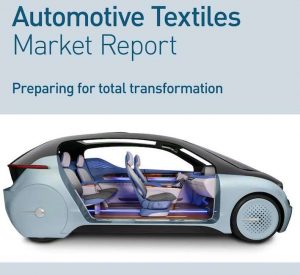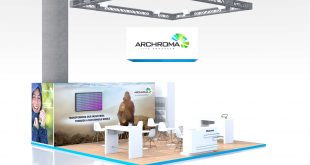 There is currently frenzied activity and investment taking place to commercialise self-driving cars, involving both the established automotive manufacturers and the technology giants of Silicon Valley.
There is currently frenzied activity and investment taking place to commercialise self-driving cars, involving both the established automotive manufacturers and the technology giants of Silicon Valley.
It is no exaggeration to say that this could completely reshape the landscape of the global automotive industry once again – even after the massive shifts that have occurred since the beginning of the 21st century, including the move towards electric vehicles.
The use of textiles in automotive applications includes floor coverings; upholstery; belts, tubes and tapes; tyre cord; safety belts; airbags; components; and filters.
The value of textile materials going into the 91.5m cars and light vehicles manufactured globally in 2018 was more than US$70bn and textile content continues to increase as manufacturers seek further means of lightweighting to reduce emissions and improve fuel consumption. As a result of higher demand for increased comfort and improved safety, the use of textile materials has increased from 20 kg in a mid-size car in 2000 to around 35 kg today, most notably from the industry-wide adoption of textile and composite underbodies as replacements for metal, but with other successful substitutions too.
In the drive towards lowering weight for reducing both fuel consumption and carbon dioxide emissions, many current developments are including new uses for fabrics and other fibre-based materials.
There have been tremendous changes to the global structure of the automotive textiles industry since the last edition of this report was published in 2016.
Over the past three years there has been major consolidation among manufacturers of both fabrics and finished components for automotive interiors, not least among the Tier 1 suppliers to the OEMs.
More disruptive change is likely with the introduction of autonomous driving, electric vehicles and car-sharing in urban cities, while end-of-life recycling, sustainability and the need for lightweight materials will increasingly affect suppliers’ strategies.
Under this challenging scenario, a new publication from Textile Media Services – Automotive Textiles: Preparing for total transformation (5th edition) – provides the latest analysis of the fast-altering global automotive textiles industry.
Featuring an overview of the automotive market and the wide-ranging use of textile materials in vehicles, this fully updated edition examines in detail the current structure of this industry, with profiles of more than 80 of the most influential Tier 1 and Tier 2 players, and explains where the growth will be in the next 25 years, and why.
This new report breaks down the application of these materials into seven key categories: carpet, interior trim and headliners, passive safety (airbags and seatbelts), insulation, NVH materials and exterior textile parts, tyre cord, belts, tubes and tapes, seating, textile reinforcements in composite parts, filtration (cabin and engine)
Published in October 2019 and written by Adrian Wilson, this in-depth market report with 340 pages and more than 130 tables: examines the global automotive industry; defines automotive fabrics and textiles; identifies key areas of application; profiles key producers and users of automotive textiles.
The complete could be purchased at the following link:
https://www.textilemedia.com/mobiletex/automotive-textiles/
 Tekstil Teknik Dergisi Tekstil Haberleri, Tekstil Sektörü, Tekstil Teknik
Tekstil Teknik Dergisi Tekstil Haberleri, Tekstil Sektörü, Tekstil Teknik




